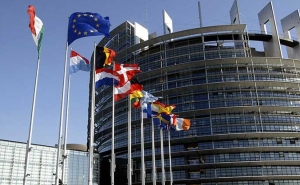 EaP Differentiated Approach Is Still Being Rooted
EaP Differentiated Approach Is Still Being Rooted

On May 21-22 the so much expected the EaP Riga Summit took place. The importance of the Summit can on the one hand be explained by the high expectations of the partner countries, on the other hand by the determination of the Eastern Partners to make changes in the Eastern Partnership project.
Since the last Vilnius Summit the necessity to reform Eastern Partnership policy has become obvious turning into the topic of wide discussion. The differentiated approach based on the peculiarities, on different aspirations of the partner countries as well as on different degrees of their recorded progress, was considered the most important and main novelty. One of the main advocates and front fighters for this novelty was Armenia, who was guided by "and-and" policy trying to combine Eurasian and European integration processes as much as it was possible.
The basis for the differentiated approach in the EaP framework should have probably become of "3-1-2" or "3-1-1-1" formula. Such kind of differentiation is based on the fact that Georgia, Ukraine and Moldova (3) the countries, who signed the Association Agreement, are on another level of relations with the EU. Armenia, which concluded the negotiations with the EU and according to the European side was ready to sign the Association Agreement, should be viewed separately. EaP other countries, Belarus and Azerbaijan (some experts view them together, some do not) are on another level. On the one hand the slow and not so efficient process of democratic reforms and on the other hand the fact that they were never proposed by the EU to sign the Association Agreement makes it illogical to make the same demands and set the same standards for Azerbaijan and Belarus. Taking into consideration the above mentioned the official Brussels came to acknowledge the necessity of a new approach and the Riga Summit should have become the main millstone for laying the basis of such differentiated approach.
The main indicator of success for this initiative is the final document adopted at the end of the Summit. The document defines both the recorded progress of the partner countries and further steps still to be done. To be objective it should be stated that the joint-declaration of the Riga Summit as compared to the similar one adopted two years ago in the Vilnius Summit contains the differentiated approach to certain extent. At the same time it is worthy to state that the principle of differentiation has not yet been completely rooted in the approach. In the final declaration of the Riga Summit we still observe deviations from the formula of "3-1-2" (this probably can be ascribed to force of inertia). In some parts of the documents the states are divided according to the fact whether they signed or did not sign the Association Agreement. In some cases the attempts are witnessed to put Armenia and Azerbaijan on the same level. This is unacceptable because Armenia and Azerbaijan differ to the great extent by the level of their democracies and by the progress made in the process of the European integration, consequently it is not objective to take common approach for them.
In spite of these flaws the fact that the differentiated approach has been defined is already of high importance and gives ground to assume that in case of impartial conditions in the near future the European aspirations of the partner countries will be clearly outlined, which in its turn will serve basis for the EU in providing diverse assistance and in deepening the relation with the EaP countries.
Other materials on this subject
- Zohrab Mnatsakanyan Participated in the Meeting of the Eastern Partnership Foreign Ministers Within the framework of the 26th OSCE Ministerial Conference in Bratislava, Foreign Minister Zohrab Mnatsakanyan participated in the meeting between the newly appointed EU High Representative for Foreign...
- INSIGHT From Yerevan: 10th Anniversary of the Eastern Partnership “Insight from Yerevan: Earth” hosted political scientist, PhD Narek Grigoryan, to discuss the 10th anniversary of the Eastern Partnership, EU policy and RA-EU relations.
- The EU EaP Future to Be Built on Dreams and Hopes Today the EU problem is not having similar agreements with the Eastern partners and moving forward with common principles, but not losing partners in the region and finding ways to deepen cooperation...
- Azerbaijan And European Union at Odds Azerbaijan does not succeed in enshrining the desired wording in its documents with the European Union.
- Armenia-EU New Agreement Outlines a Very Good Path for Future Partnership Armenia decides itself how far to go in this partnership taking into account that the country is a member of the Eurasian Economic Union.
-
 17:08
17:08The regular session of the Anti-corruption Policy Council takes place in Jermuk
-
 15:05
15:05The Prime Minister sends congratulatory messages to the supreme leader of Iran and the President of Iran
-
 11:11
11:11Armenia sends earthquake aid to Turkey
-
 10:43
10:43Commemoration of the Pontiff St. Sahak Partev
-
 09:16
09:16Some roads are closed and difficult to pass in Armenia
-
 19:55
19:55Phone conversation of the Foreign Minister of Armenia with the U.S. Assistant Secretary of State for European and Eurasian Affairs
-
 18:30
18:30Prime Minister Pashinyan and President Khachaturyan meet
-
 18:20
18:20Ararat Mirzoyan with Co-Chairman of the OSCE Minsk Group of France Brice Roquefeuil
-
 17:01
17:01Humans could land on Mars within 10 years, Musk predicts
-
 16:45
16:45France, US urge 'immediate' end to Nagorno Karabakh blockade
-
 16:01
16:01Blockaded Nagorno Karabakh launches fundraiser to support quake-hit Syria
-
 15:59
15:59Earthquake death toll in Turkey rises to 18,342
-
 15:43
15:43Ararat Mirzoyan Held a Telephone Conversation with Sergey Lavrov
-
 15:06
15:06French president rules out fighter jet supplies to Ukraine in near future
-
 14:47
14:475 Day Weather Forecast in Armenia
-
 14:44
14:44President Vahagn Khachaturyan wrote a note in the book of condolences opened in the Embassy of Syria in Armenia
-
 14:20
14:20Azerbaijan’s provocations impede establishment of peace and stability – Armenian FM tells Russian Co-Chair of OSCE MG
-
 12:57
12:57France representation to OSCE: Paris calls on Azerbaijan to restore freedom of movement through Lachin corridor
-
 11:40
11:40Command of Kosovo forces highly appreciated preparation of Armenian peacekeepers
-
 10:16
10:16The United States withdrew from sanctions against Syria for six months the provision of assistance after the earthquake
day
week
month
Humidity: %
Wind: km/h









